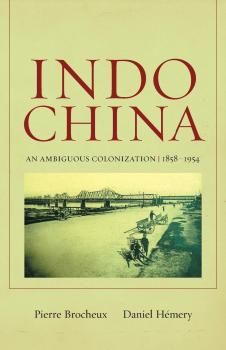ТОП просматриваемых книг сайта:
From Indochina to Vietnam: Revolution and War in a Global Perspective
Скачать книги из серии From Indochina to Vietnam: Revolution and War in a Global PerspectiveImperial Heights - Eric T. Jennings
From Indochina to Vietnam: Revolution and War in a Global PerspectiveАннотация
Информация о книге
Автор произведения Eric T. Jennings
Жанр Документальная литература
Серия From Indochina to Vietnam: Revolution and War in a Global Perspective
Contesting Indochina - M. Kathryn Edwards
From Indochina to Vietnam: Revolution and War in a Global PerspectiveАннотация
Информация о книге
Автор произведения M. Kathryn Edwards
Серия From Indochina to Vietnam: Revolution and War in a Global Perspective
Hanoi's Road to the Vietnam War, 1954-1965 - Pierre Asselin
From Indochina to Vietnam: Revolution and War in a Global PerspectiveАннотация
Информация о книге
Автор произведения Pierre Asselin
Жанр Документальная литература
Серия From Indochina to Vietnam: Revolution and War in a Global Perspective
Аннотация
Информация о книге
Автор произведения David G. Marr
Серия From Indochina to Vietnam: Revolution and War in a Global Perspective
Catholic Vietnam - Charles Keith
From Indochina to Vietnam: Revolution and War in a Global PerspectiveАннотация
Информация о книге
Автор произведения Charles Keith
Серия From Indochina to Vietnam: Revolution and War in a Global Perspective
Аннотация
Информация о книге
Автор произведения Pierre Brocheux
Серия From Indochina to Vietnam: Revolution and War in a Global Perspective
Assuming the Burden - Mark Lawrence
From Indochina to Vietnam: Revolution and War in a Global PerspectiveАннотация
Информация о книге
Автор произведения Mark Lawrence
Серия From Indochina to Vietnam: Revolution and War in a Global Perspective
Vietnam 1946 - Stein Tonnesson
From Indochina to Vietnam: Revolution and War in a Global PerspectiveАннотация
Информация о книге
Автор произведения Stein Tonnesson
Серия From Indochina to Vietnam: Revolution and War in a Global Perspective








